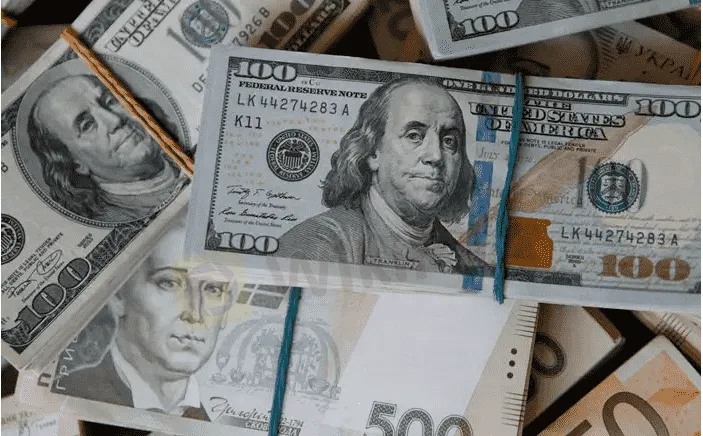简体中文
繁體中文
English
Pусский
日本語
ภาษาไทย
Tiếng Việt
Bahasa Indonesia
Español
हिन्दी
Filippiiniläinen
Français
Deutsch
Português
Türkçe
한국어
العربية
Gas woes drag euro lower, dollar gains on recession worry
Abstract:-The dollar rose against a basket of major currencies on Tuesday, reversing course after three straight sessions of declines as recession fears grew and investors awaited a Federal Reserve policy statement, while energy supply concerns weighed on the euro.

European Union countries approved a weakened emergency plan to lessen gas demand on Tuesday, after striking compromise deals to limit the cuts for some countries, as they gird for further Russian reductions in supply.
Risk-off sentiment helped boost the dollar, as U.S. equities were pulled lower following a profit warning from retail giant WalMart, which said it would slash prices to reduce inventory.
The Fed is widely expected to raise interest rates by 75 basis points on Wednesday, with investors keeping a close eye on the central banks forward guidance as it grapples with high inflation and the potential for a recession. Last week, the European Central Bank (ECB) raised rates by 50 basis points.
“The writing is on the wall for the euro. I know it has been a punching bag for quite some time, but these growth concerns are not going to get any better, the energy crisis it just seems like it is only going to get worse,” said Edward Moya, senior market analyst at Oanda in New York.
“There are growing risks we could see investors become a little bit more nervous that it might not just be a very brief recession, that it could be a little bit more hard-hitting so you are probably still going to see that safe-haven flows into the dollar are likely to remain the focal point for many traders.”
The dollar index rose 0.714% at 107.180, with the euro down 0.98% to $1.012. The euro was on pace for its biggest daily percentage drop since July 11.
Data showed U.S. consumer confidence fell for a third straight month in July, while new home sales dropped to their lowest level in more than two years, signaling an economy that may be susceptible to a recession.
On Thursday, investors will get the advance reading for second-quarter gross domestic product, while Friday will bring the release of personal consumption expenditures, the Feds preferred inflation measure.
A second straight quarter of negative growth would result in what is known as a technical recession by analysts, although an official declaration of a recession from the National Bureau of Economic Research, which uses a more comprehensive definition, would likely come much later.
On Monday, Russian energy giant Gazprom, citing instructions from an industry watchdog, said gas flows to Germany through the Nord Stream 1 pipeline would fall to 33 million cubic meters per day from Wednesday, or half of the current flow, which was already at only 40% capacity.
The euro also fell 0.87% against the safe-havens yen to 138.450 and was down 1.1% against the Swiss franc at 0.975.
The Japanese yen weakened 0.07% versus the greenback to 136.78 per dollar, while sterling was last trading at $1.2024, down 0.15% on the day.
In cryptocurrencies, bitcoin last fell 5.75% to $20,894.37 after Bloomberg News reported the U.S. Securities and Exchange Commission (SEC) is investigating whether Coinbase Global improperly let Americans trade digital assets that should have been registered as securities.

Disclaimer:
The views in this article only represent the author's personal views, and do not constitute investment advice on this platform. This platform does not guarantee the accuracy, completeness and timeliness of the information in the article, and will not be liable for any loss caused by the use of or reliance on the information in the article.
Read more

IG Group Acquires Freetrade for £160M to Expand UK Investment Market
IG Group acquires Freetrade for £160M, boosting its UK investment offerings. Freetrade to operate independently, with plans for growth and innovation.

Webull Launches SMSF Investment Platform with Zero Fees
Webull introduces commission-free SMSF trading, offering over 3,500 US and Australian ETFs, with no brokerage fees and enhanced portfolio tools.

April Fool's Day Scam Prevention Experience Collection
Share your “Forex Fraud Prevention Experience”, win WikiFX points and gold rewards!

How Will the Market React at a Crucial Turning Point?
Safe-haven assets like gold and U.S. Treasuries are surging, while equities face mounting pressure. As this pivotal moment approaches, how will the market react?
WikiFX Broker
Latest News
FCA Warns Against 10 Unlicensed or Clone Firms
CySEC Warns Against 14 Unlicensed Investment Websites
Top Currency Pairs to Watch for Profit This Week - March 31, 2025
Will natural disasters have an impact on the forex market?
Philippines Deports 29 Indonesians Linked to Online Scam Syndicate in Manila
Exposing the Top 5 Scam Brokers of March 2025: A Closer Look by WikiFX
Gold Prices Climb Again – Have Investors Seized the Opportunity?
Webull Launches SMSF Investment Platform with Zero Fees
Australian Regulator Warns of Money Laundering and Fraud Risks in Crypto ATMs
AI-Powered Strategies to Improve Profits in Forex Trading
Currency Calculator







